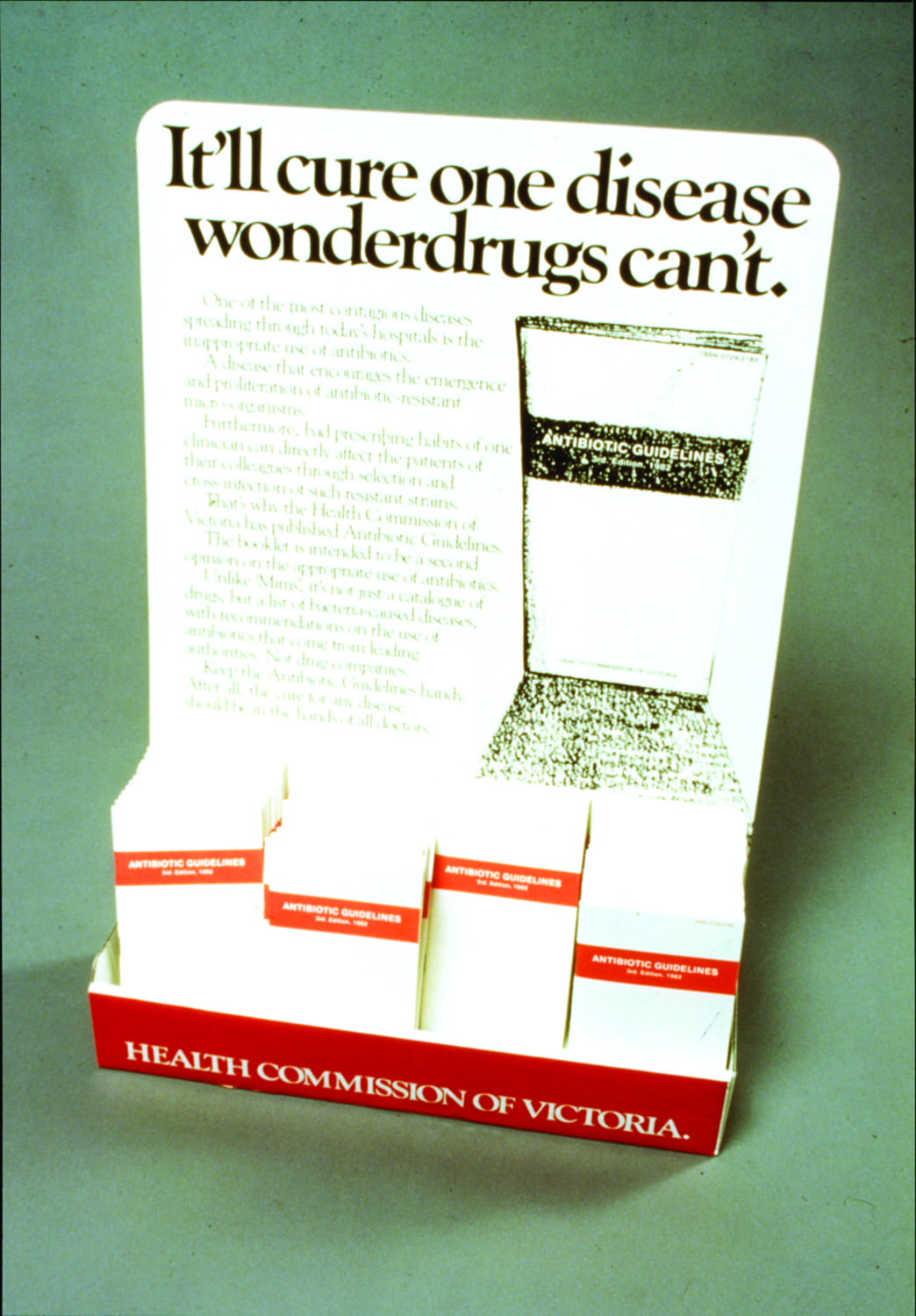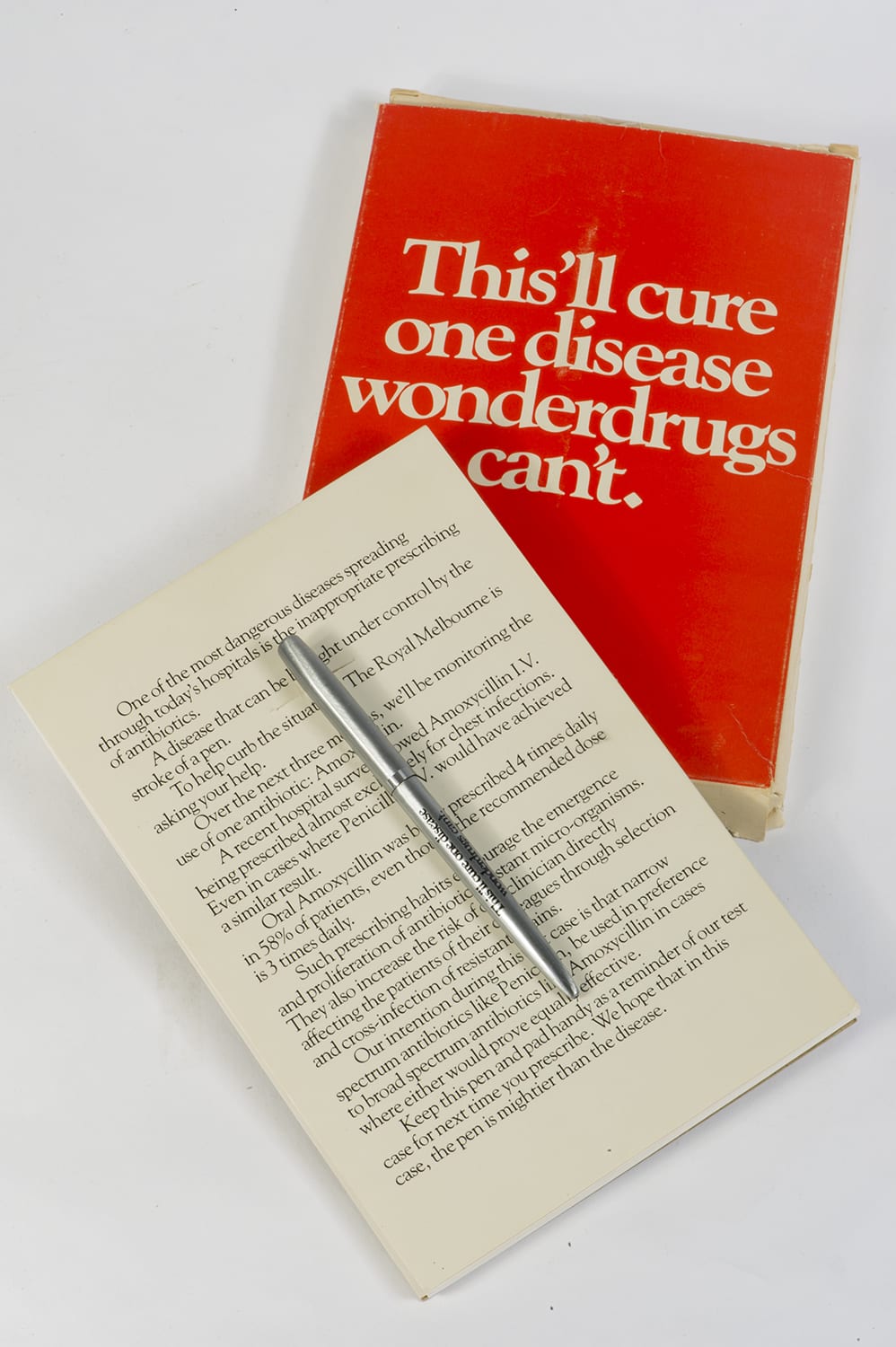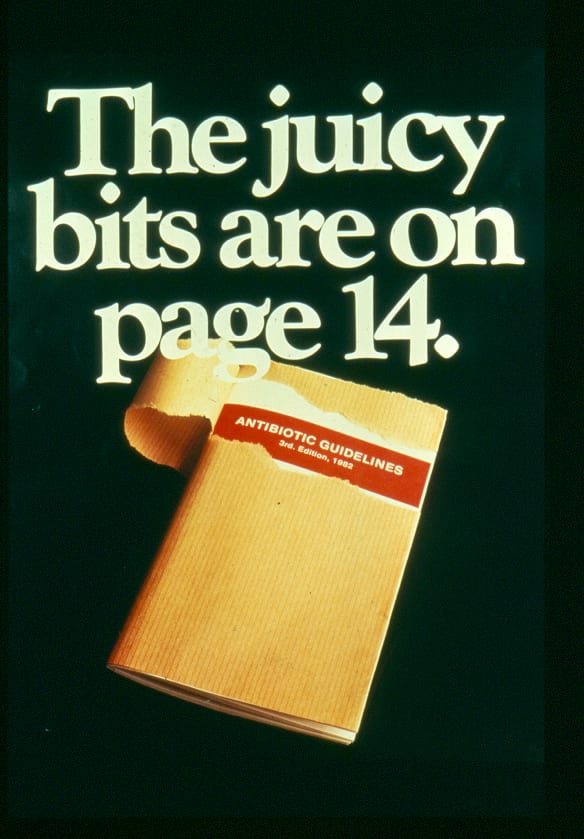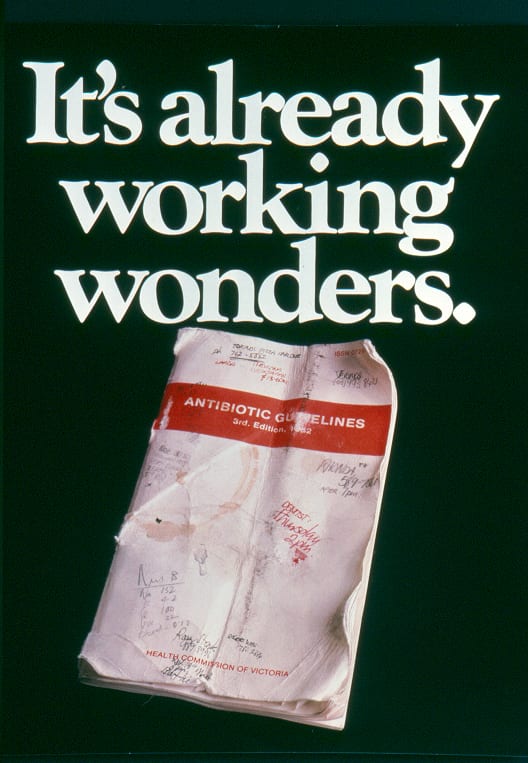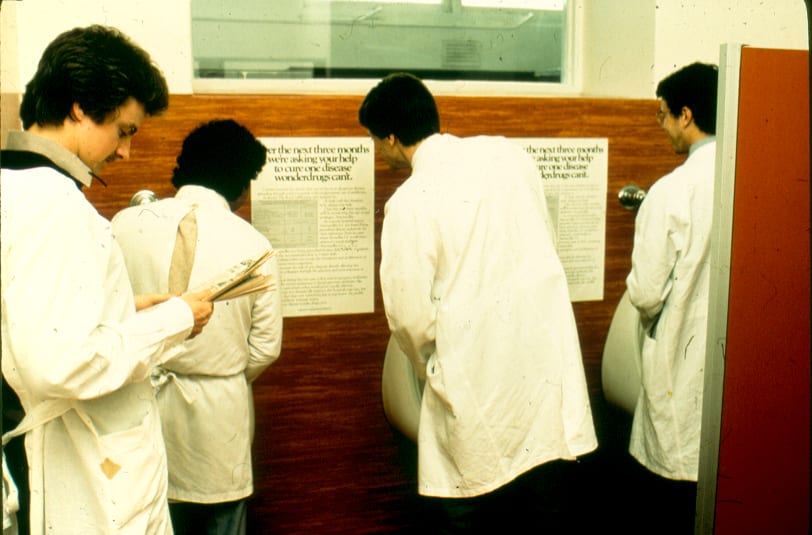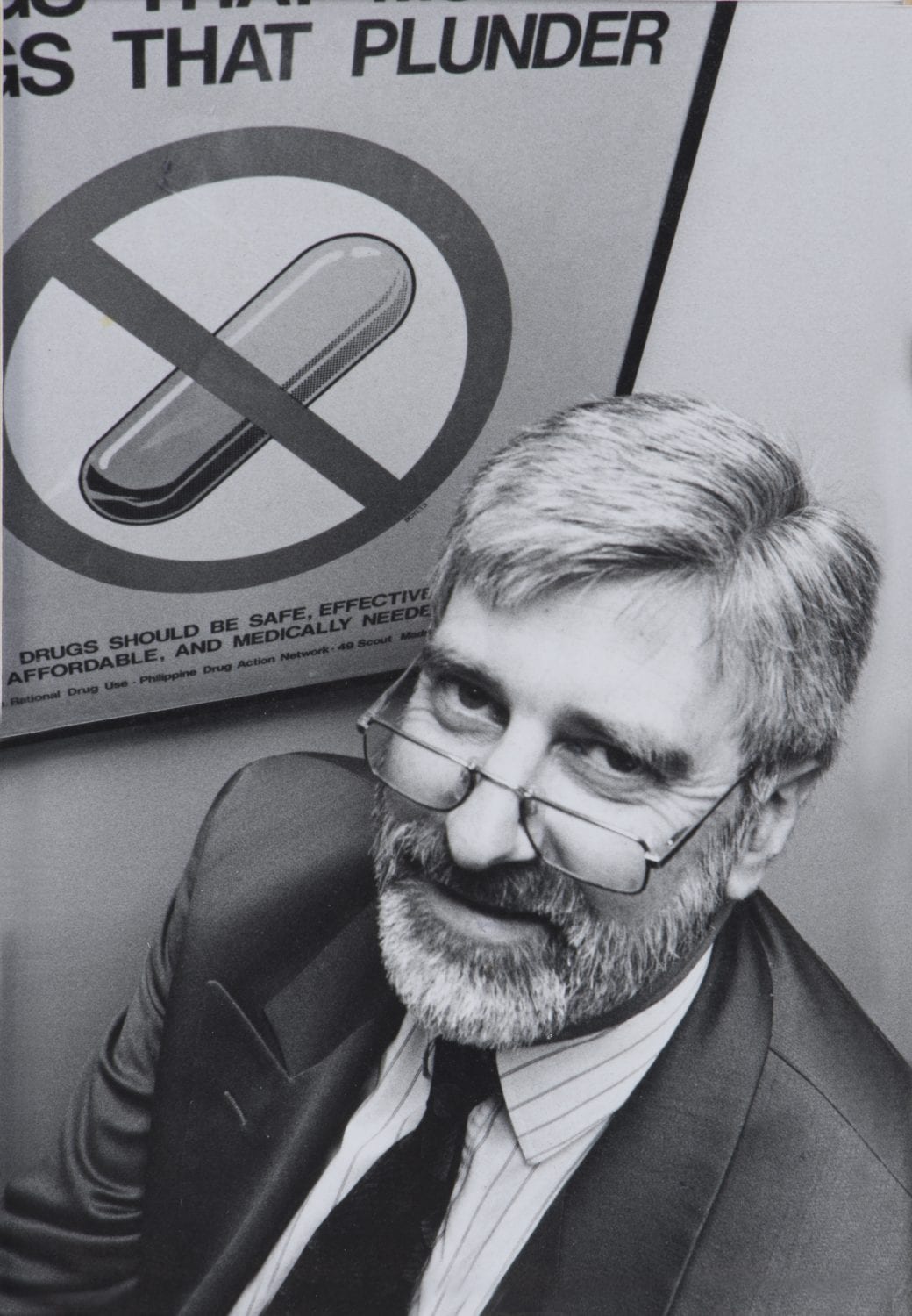When Ken Harvey met advertising professional Geoff Godkin from the firm Scali, McCabe, Sloves at their children’s school, he challenged him to tackle this problem.
Geoff Godkin was convinced he could fix the problem by employing a targeted dose of education using the same tricks used by the pharmaceutical industry: clever slogans, good imagery, succinct messages.
Neil Naismith and Rob Moulds convinced The Royal Melbourne Hospital’s Board that this was an innovative experiment and worthy of $10,000 for an advertising campaign to change prescribing habits.
The three-month campaign aimed to change the prescribing of amoxicillin to the appropriate penicillin for chest infections. The money funded a mailout to all hospital medical staff, the design and printing of posters, and the purchase of display stands to facilitate the distribution of the third edition of the guidelines booklets. Campaign slogans were deliberately provocative and humorous. The hospital was saturated — even in the bathrooms — with posters that favoured simplistic graphics, black backgrounds and catchy slogans. A direct mail campaign was used. Brochures were printed and distributed by the thousand. It worked. The audit proved that prescribing behaviour in favour of more rational use of antibiotics for pneumonia changed after the intervention of educational advertising. At the end of The Royal Melbourne Hospital campaign the use of amoxicillin for pneumonia had fallen from 56 per cent to 8 per cent of cases.

